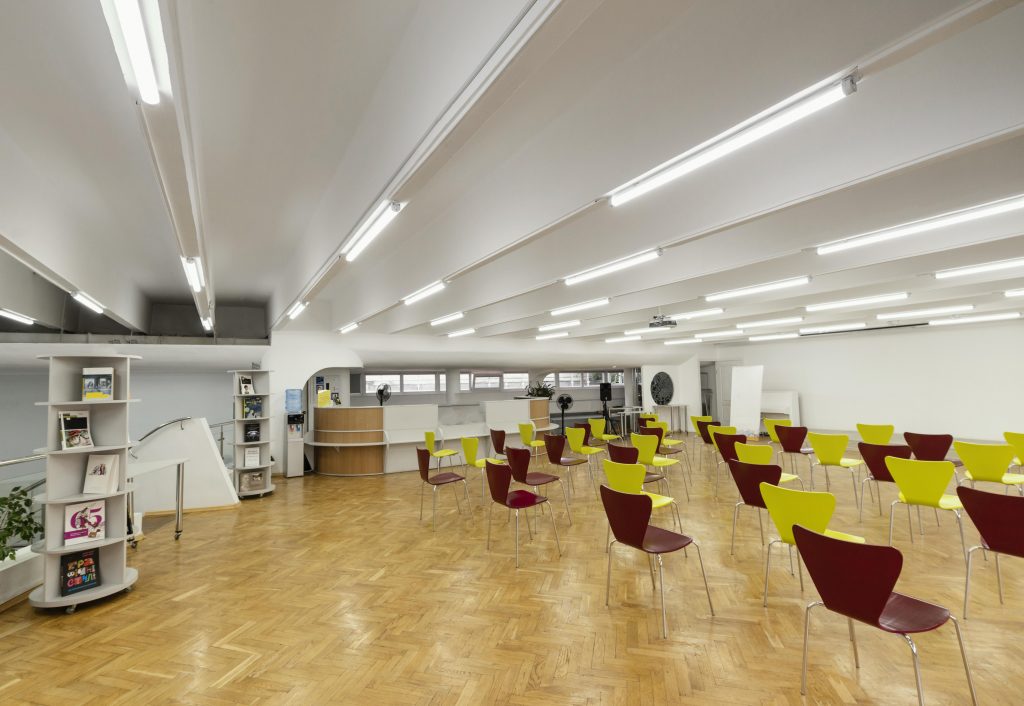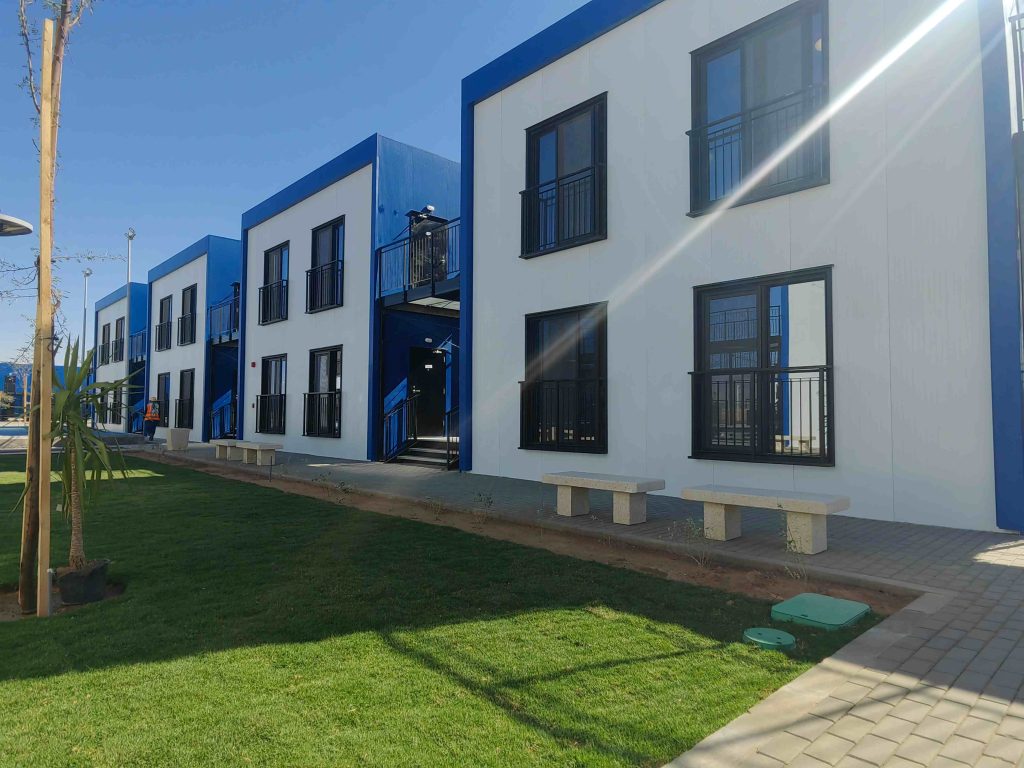Why MIC (Modular Integrated Construction) is Transforming the Construction Industry
Why MIC (Modular Integrated Construction) is Transforming the Construction Industry
Modular Integrated Construction (MIC) is arguably revolutionizing the construction industry with a smarter, more progressive direction in building. Modular construction – the assembling of factory-made components on-site – is another way to deliver buildings faster and often cheaper.

Key Features of Modular Integrated Construction
The Core Principles Behind MIC
Modular integrated construction or MIC is changing the MEP construction industry with its focus on efficiency, accuracy and sustainability. Prefabrication and modularization are the backbone of MIC. This method entails off-site production of factory-controlled building components and their assembly on-site. This process allows MIC to leverage less construction waste and higher quality in material components.
The Role of Standardization in MIC
Standardization is arguably the most important part of MIC’s success. This specification-centric approach reduces the variability during the build process resulting in lower errors when assembling a project as the dimensions and specifications to be used in building components are predefined. This method also promotes scalability which allows manufacturers to produce it in bulk while ensuring homogeneity.
GS Housing’s Contribution to Modular Design
By the way, GS Housing pioneered modular idea concepts as early as 2001. The modular approach is demonstrated in their innovative MIC solutions. Unlike native solutions, their innovative MIC solutions demonstrate what modularization enables, as interchangeable steel structures consisting of a top frame, bottom frame, column, identified column, wall panel, etc.
Advantages of Modular Integrated Construction in the Industry
Speed and Efficiency in Project Delivery
One of the most significant advantages of MIC is its ability to accelerate project timelines without compromising quality.
How MIC Reduces Construction Time
Since a good part of the construction is done in factory settings, MIC avoids delays from weather and site restrictions. With site preparation for foundation and other needs taking place simultaneously, construction modules are fully pre-fabricating, allowing for parallel workflows that drastically reduce the overall time of project completion. This technique also enables swift use in an emergency as in disaster relief or temporary housing requirements.
GS Housing’s Fast-Track Solutions
GS Housing provides new generations of housing as per the needs of the client at a fast turnaround time. Each factory ground can provide hundreds of modular units every day. During the COVID-19 pandemic, they shipped approximately 1000 flat pack houses for rapid emergency hospital construction within days.
Cost-Effectiveness Through Modular Techniques
MIC offers substantial cost savings compared to traditional construction methods by optimizing resource utilization.
Minimizing Waste with MIC
Controlled factory environments ensure precise material each time a module is produced. That substantially minimizes waste in comparison to the waste created through building processes on-site that usually involve excess materials or inadequacies. Conversely, reusable modules save the money through longevity of the life of the building parts.
GS Housing’s Cost-Saving Innovations
GS Housing allows for precision by utilizing some of the most advanced production technologies including CNC machining and robotic welding to reduce material waste. Using their graphene electrostatic spraying process, they make structures more resistant to corrosion and last more than 20 years longer.

Enhancing Quality and Safety with Modular Integrated Construction
Precision Engineering in MIC Projects
Precision engineering is at the heart of MIC’s promise of superior quality.
Ensuring Consistency Across Modules
Factory-based manufacturing ensures uniformity across all modules through strict quality control measures. Components undergo rigorous testing for load-bearing capacity, fire resistance, water resistance, and airtightness before delivery.
GS Housing’s Quality Assurance Practices
GS Housing implements an ISO-certified quality control system that includes full inspections and secondary sampling before shipment. Their adherence to international standards like CE and UL certifications guarantees reliability across diverse markets.
Improving Worker Safety with Factory-Based Assembly
Seniority and experience matter to a great extent but because MIC is factory-based, the workers are not exposed to on-site hazardous conditions like heavy machinery or extreme weather. A controlled environment allows for better regulation of safety protocols while providing efficient ergonomic workstations for productivity.
Sustainability and Environmental Benefits of MIC
Reducing Carbon Footprint in Construction Projects
One such trend that is going over the modern world and slowly changing the construction industry to lower the carbon footprint is modular integrated construction (MIC). Modular units have been found to be produced at factories in a way that they dictate their usage of material with precision, relatively on-site construction process.
In addition, the materials that MIC uses, including galvanized steel profiles and basalt wool insulation layers, are recyclable materials that are beneficial for the long-term sustainability of the environment.
Sustainable Materials Used in Modular Units
MIC consists of environmentally friendly materials. Cement fiber boards used in modular housing, for example, are non-combustible and moisture-resistant and maintain their integrity when exposed to water. Such properties are useful for improving the lifespan and minimizing product turnover, which also helps to save resources.
GS Housing’s Eco-Friendly Products and Initiatives
GS Housing has been a leader in sustainability in the construction space for years. Their MIC solutions include high-tech solutions such as graphene electrostatic spraying for higher anti-corrosive properties. They also have rigorous quality control in their production facilities to reduce wastage and use everything available efficiently.
Scalability and Flexibility Offered by MIC
Adapting to Diverse Project Requirements
The most remarkable aspect of MIC is that it can be adjusted for different project needs. Modular is such a versatile solution that these units fit just about any need for engineering camps, military facilities, or commercial space. It is this adaptability that comes from the ability to compile standard components by being taken apart and put together in various ways depending on project needs.
Customizable Solutions from GS Housing
This is where GS Housing forays into excellent modular solutions. Its design team collaborates with clients to produce custom designs that meet the specific requirements for a wide range of uses including schools, health centers and emergency shelters. They possess more than 48 national innovation patents.
Expanding Capacity Without Compromising Quality
It is through capabilities like this, as seen in GS Housing’s five production bases across China, that one can truly conceptualize a future of offsite construction, and can quickly process emergency, oversized orders with an annual production capacity of 170,000 houses.
Combining state-of-the-art machinery in their facilities, their entire manufacturing process is highly standardized to comply with precision and consistency across all modules.
The Future of the Construction Industry with Modular Integrated Construction
How MIC is Reshaping Traditional Building Practices
Different from the conventional practice where most of the project activities are on-site (human labor focused) and require many site resources (material-focused), MIC creates most of the activities in controlled factory-based environments. Not only does this speed up your timeline, but it reduces exposure to wild cards such as weather or resource shortages.
With increasing global demand for sustainable infrastructure, MIC represents a welcome cost-effective solution that aligns with environmental aspirations, while not compromising functionality or aesthetics. The way it can change course quickly based on near real-time market needs makes it a foundational element for future urban development projects.
FAQs
Q1: How is modular integrated construction more sustainable than traditional methods?
A: MIC reduces the waste of material used by being very accurate with the amount, especially in factory conditions, and also implements recyclable materials, such as galvanized profile steel.
Q2. Are the modules adaptable to different applications?
A: Yes! Depending on the needs of the customer, modular units may be customized for many different purposes, including schools, hospitals, or commercial spaces.
Q3. How does GS Housing support large-scale modular projects?
A: With five advanced production bases capable of producing over 170,000 houses annually, GS Housing ensures timely delivery without compromising quality.



